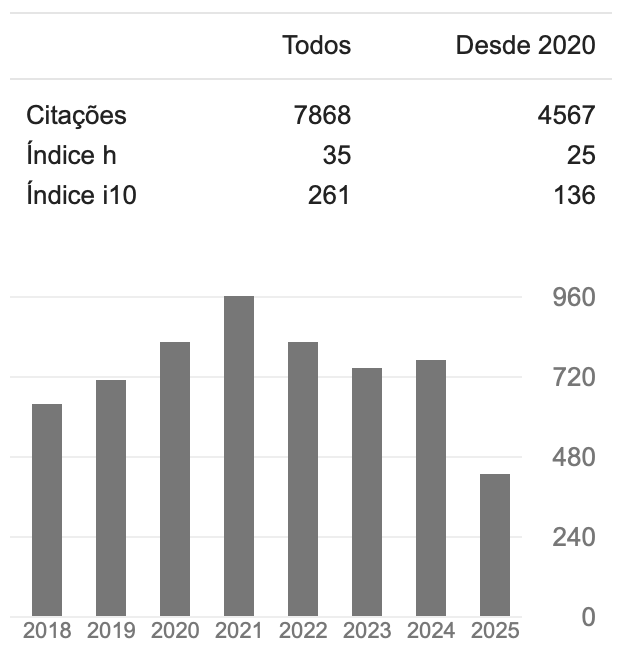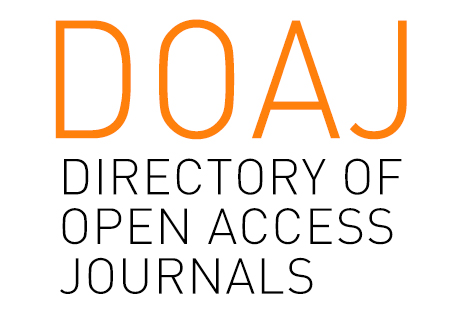Marcadores inflamatórios e magnésio séricos em pacientes com migrânea - um estudo caso-controle
Inflammatory markers and serum magnesium in patients with migraine - a case-control study
DOI:
https://doi.org/10.17765/2176-9206.2025v18e12609Palavras-chave:
Inflamação Neurogênica, Magnésio, MigrâneaResumo
Migrânea é uma condição ubíqua. Agentes inflamatórios em níveis mais elevados desencadeiam a ativação dos nervos trigêmeos e a liberação de neuropeptídeos e causam neuroinflamação. Deficiência de magnésio desempenha papel estimulando a propagação da depressão cortical. Este estudo tem como objetivo determinar a correlação entre marcadores inflamatórios, magnésio e migrânea. MÉTODOS: Estudo Prospectivo, caso-controle, quantitativo. Dividido em 2 grupos: Caso e Controle. Incluiu pessoas saudáveis entre 18 e 60 anos. Preencheu-se um formulário com dados antropométricos, socioeconômicos e clínicos e níveis de magnésio e marcadores inflamatórios. Analisado usando SPSS. RESULTADOS: Grupos foram significativamente diferentes na história familiar e insônia. Magnésio[Controle:1,97±0,16,Caso:2,06±0,40;p:0,379], Proteína-C Reativa [Controle:4,40±3,66,caso:3,17±4,61,p:0,088], VHS[Controle:7,34±6,71, Caso:16,16±13,50, p:<0,00001], LDL-c [Controle:98,49±31,33, Caso:116,65±38,55, p:0,035], HDL-c[Controle:61,45±19,11, Caso:50,36±19,04, p:0,005], Ferritina[Controle:63,37±64,93, Caso:105,34±213,11, p:0,315], Fibrinogênio[Controle:279,79±93,12, Caso:378,32±131,82, p:0,017]. Conclusão: Houve correlação significativa entre migrânea, insônia e herança familiar. A relação entre migrânea e marcadores inflamatórios foi significativa para LDL-c, VHS, fibrinogênio e HDL-c. No magnésio, não houve diferenças.Downloads
Referências
Ashina M. Migraine. N Engl J Med. 2020;383(19):1866-1876. https://doi.org/10.1056/NEJMra1915327.
Martami F, Razeghi S, Togha M et al. The serum level of inflammatory markers in chronic and episodic migraine: a case-control study. Neurol Sci. 2018;39(10):1741-1749. https://doi.org/10.1007/s10072-018-3493-0.
Ceylan M, Bayraktutan OF, Becel S et al. Serum levels of pentraxin-3 and other inflammatory biomarkers in migraine: Association with migraine characteristics. Cephalalgia. 2016;36(6):518-25. https://doi.org/10.1177/0333102415598757.
Dolati S, Rikhtegar R, Mehdizadeh A et al. The Role of Magnesium in Pathophysiology and Migraine Treatment. Biol Trace Elem Res. 2020;196(2):375-383. https://doi.org/10.1007/s12011-019-01931-z.
Younger DS. Epidemiology of Migraine. Neurol Clin. 2016 Nov;34(4):849-861. https://doi.org/10.1016/j.ncl.2016.06.011. PMID: 27719997.
Dodick DW. Migraine. Lancet. 2018;391(10127):1315-1330. https://doi.org/10.1016/S0140-6736(18)30478-1.
Grangeon L, Lange KS, Waliszewska-Prosół M et al. Genetics of migraine: where are we now? J Headache Pain. 2023 Feb 20;24(1):12-34. https://doi.org/10.1186/s10194-023-01547-8.
Ebahimzadeh K, Gholipour M, Samadian M et al. A Comprehensive Review on the Role of Genetic Factors in the Pathogenesis of Migraine. J Mol Neurosci. 2021;71(10):1987-2006. https://doi.org/10.1007/s12031-020-01788-1.
Sutherland HG, Albury CL, Griffiths LR. Advances in genetics of migraine. J Headache Pain. 2019;20(1):72-91. https://doi.org/10.1186/s10194-019-1017-9.
Tiseo C, Vacca A, Felbush A et al. Migraine and sleep disorders: a systematic review. J Headache Pain. 2020;21(1):126-138. https://doi.org/10.1186/s10194-020-01192-5.
Rohatgi A, Westerterp M, Von Eckardstein A et al. A Multifunctional Roadmap for Future HDL Research. Circulation. 2021;143(23):2293-2309. https://doi.org/10.1161/CIRCULATIONAHA.120.044221.
Ganjali S, Gotto AM Jr, Ruscica M et al. Monocyte-to-HDL-cholesterol ratio as a prognostic marker in cardiovascular diseases. J Cell Physiol. 2018;233(12):9237-9246. https://doi.org/10.1002/jcp.27028.
Van Welie FC, Kreft LA, Huisman JMA et al. Sex-specific metabolic profiling to explain the increased CVD risk in women with migraine: a narrative review. J Headache Pain. 2023;24(1):64-74. https://doi.org/10.1186/s10194-023-01601-5.
Ruscica M, Tokgözoğlu L, Corsini A et al. PCSK9 inhibition and inflammation: A narrative review. Atherosclerosis.Jul 2019;288(1):146-155. https://doi.org/10.1016/j.atherosclerosis.2019.07.015.
Liampas I, Mylonas KS, Brotis A et al. Serum lipid abnormalities in migraine: A meta-analysis of observational studies. Headache. 2021;61(1):44-59. https://doi.org/10.1111/head.14039.
Ng CYH, Tan BYQ, Teo YN et al. Myocardial infarction, stroke and cardiovascular mortality among migraine patients: a systematic review and meta-analysis. J Neurol. 2022;269(5):2346-2358. https://doi.org/10.1007/s00415-021-10930-x.
Krintus M, Kozinski M, Kubica J et al. Critical appraisal of inflammatory markers in cardiovascular risk stratification. Crit Rev Clin Lab Sci. 2014;51(5):263-79. https://doi.org/10.3109/10408363.2014.913549.
Zhang J, Zhao Y, Jing Y et al. The plasma fibrinogen levels in the nitroglycerin-induced chronic migraine rat model and its association between migraine-associated vestibular dysfunction. Front Neurol. 2023;14(3):980543-0. https://doi.org/10.3389/fneur.2023.980543.
Yucel Y, Tanriverdi H, Arıkanoglu A et al. Increased fibrinogen, D-dimer and galectin-3 levels in patients with migraine. Neurol Sci. 2014 Apr;35(4):545-9. https://doi.org/10.1007/s10072-013-1542-2.
Bray NL, Pimentel H, Melsted P et al. Near-optimal probabilistic RNA-seq quantification [published correction appears in Nat Biotechnol. 2016;34(8):888]. Nat Biotechnol. 2016;34(5):525-527. https://doi.org/10.1038/nbt.3519.
Galanakis DK, Protopopova A, Li K et al. Novel characteristics of soluble fibrin: hypercoagulability and acceleration of blood sedimentation rate mediated by its generation of erythrocyte-linked fibers. Cell Tissue Res. 2022;387(3):479-491. https://doi.org/10.1007/s00441-022-03599-9.
Lippi G, Mattiuzzi C, Cervellin G. C-reactive protein and migraine. Facts or speculations? Clin Chem Lab Med. 2014;52(9):1265-72. https://doi.org/10.1515/cclm-2014-0011.
Moreira AC, Mesquita G, Gomes MS. Ferritin: An Inflammatory Player Keeping Iron at the Core of Pathogen-Host Interactions. Microorganisms. 2020;8(4):589-608. https://doi.org/10.3390/microorganisms8040589.
Aamodt AH, Borch-Iohnsen B, Hagen K et al. Headache prevalence related to haemoglobin and ferritin. The HUNT Study. Cephalalgia. 2004;24(9):758-62. https://doi.org/10.1111/j.1468-2982.2004.00756.x.
Assarzadegan F, Asgarzadeh S, Hatamabadi HR et al. Serum concentration of magnesium as an independent risk factor in migraine attacks: a matched case-control study and review of the literature. Int Clin Psychopharmacol. 2016;31(5):287-92. https://doi.org/10.1097/YIC.0000000000000130.
Downloads
Publicado
Como Citar
Edição
Seção
Licença
Copyright (c) 2025 Saúde e Pesquisa

Este trabalho está licenciado sob uma licença Creative Commons Attribution 4.0 International License. A submissão de originais para a revista Saúde e Pesquisa implica na transferência da Carta Concessão de Direitos Autorais, pelos autores, dos direitos de publicação digital para a revista após serem informados do aceite de publicação.
A Secretaria Editorial irá fornecer da um modelo de Carta de Concessão de Direitos Autorais, indicando o cumprimento integral de princípios éticos e legislação específica. Os direitos autorais dos artigos publicados nesta revista são de direito do autor, com direitos da revista sobre a primeira publicação. Os autores somente poderão utilizar os mesmos resultados em outras publicações, indicando claramente a revista Saúde e Pesquisa como o meio da publicação original. Em virtude de tratar-se de um periódico de acesso aberto, é permitido o uso gratuito dos artigos, principalmente em aplicações educacionais e científicas, desde que citada a fonte. A Saúde e Pesquisa adota a licença Creative Commons Attribution 4.0 International.
A revista se reserva o direito de efetuar, nos originais, alterações de ordem normativa, ortográfica e gramatical, com vistas a manter o padrão culto da língua e a credibilidade do veículo. Respeitará, no entanto, o estilo de escrever dos autores. Alterações, correções ou sugestões de ordem conceitual serão encaminhadas aos autores, quando necessário. Nesses casos, os artigos, depois de adequados, deverão ser submetidos a nova apreciação. As opiniões emitidas pelos autores dos artigos são de sua exclusiva responsabilidade.


















